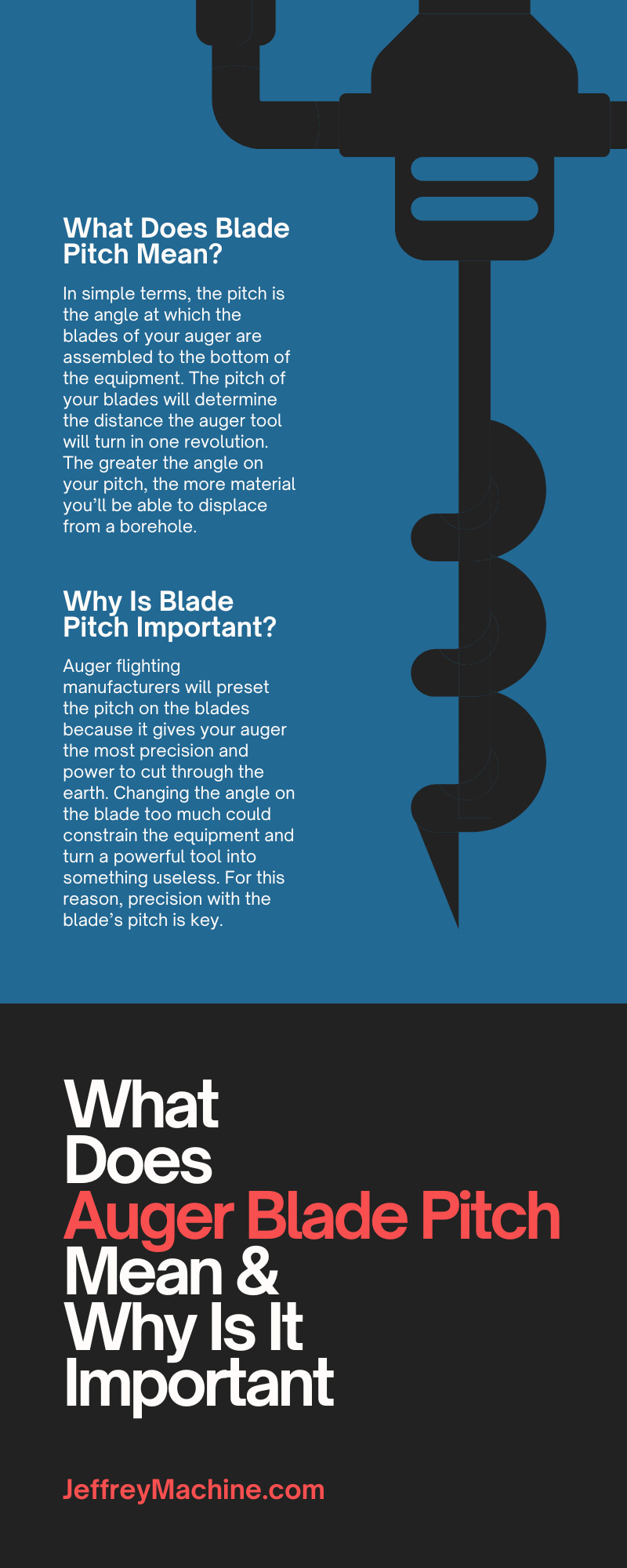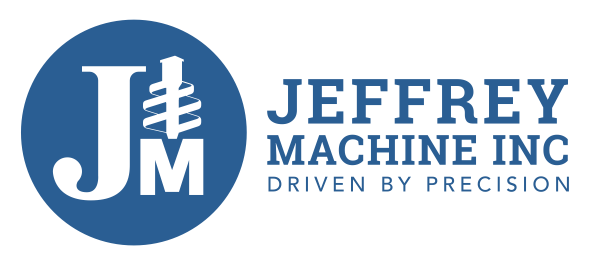What Does Auger Blade Pitch Mean & Why Is It Important

Do you know what auger blade pitch means and why it’s important to your application process? Learn more about your auger tool and how you can utilize this equipment to your advantage. In this article, we give a brief overview of what blade pitch means, how to measure it, why it’s important, and much more—keep reading for more information.
What Are Auger Blades?
Auger blades are the component attached to the bottom of your auger tool. They are what allow your drilling device to cut or drill through a surface. Most blades are replaceable parts, and you can repair them from time to time when they receive damage in the field.
There are multiple kinds of blades that are appropriate for a variety of applications. You might use a straight-edge blade to drill through softer soils and materials, while a serrated blade is best for denser soils and more rigid materials.
What Does Blade Pitch Mean?
In simple terms, the pitch is the angle at which the blades of your auger are assembled to the bottom of the equipment. The pitch of your blades will determine the distance the auger tool will turn in one revolution. The greater the angle on your pitch, the more material you’ll be able to displace from a borehole.
How To Measure Blade Pitch
Measure the distance from one outer ridge of a flight to the one beside it. This will give you the pitch measurement. Keep in mind that if your pitch is more than one and a half times the outer diameter or less than two-thirds, it could damage your auger, and you should not use it.
Why Is Blade Pitch Important?
Auger flighting manufacturers will preset the pitch on the blades because it gives your auger the most precision and power to cut through the earth. Changing the angle on the blade too much could constrain the equipment and turn a powerful tool into something useless. For this reason, precision with the blade’s pitch is key.
How Blade Pitch Affects Your Application
Your auger blade pitch is vital in your application process and has an effect on your results. When you’re working with soil that is looser and light in weight, with a steep blade pitch, the soil will fall back into your borehole. While this configuration would be ideal for denser soils, using a flatter pitch for the looser soils is better so you can pull the material from the ground as you’re drilling.
What If You Need To Change the Pitch?
If your current pitch on your auger tool is not appropriate for your application, there are two options you can choose from to correct the situation. Either you can use a different machine with the correct auger flighting for your project, or you can send in your blades to the manufacturer you purchased the tool from and have the company change the pitch for you.
We suggest making any alterations through the manufacturer to ensure you have the correct pitch. A professional will have the right tools and knowledge to change the angle appropriately.
How To Care for Your Auger Flighting/Blades
To keep the suitable pitch intact, you need to learn how to care for your auger flighting. First, examine the welds that secure the blade to your auger; if they are cracked or broken, you will need to stop for maintenance or replace the flight if it is not reparable. Double-check the welds every few applications to ensure nothing becomes loose again.
Second, you should never put too much strain on your auger tool, or you will be creating long-term problems with the machine that you could prevent. Only use your equipment as intended—we suggest continual training for all employees to ensure no one is misusing the augur. For example, using the flighting as a hammer to break through tougher ground could be making micro-adjustments to your pitch which will affect the speed and quality of the auger’s drilling capability.
Auger Blade Safety
Now that you understand what auger blade pitch means and the importance of the component, you can learn more about being safe around this part of the tool. The blades at the end of your auger are extremely sharp. Therefore, workers must take extra measures around the work site to keep them safe.
First and foremost, before you begin using the equipment, locate the shutoff switch and understand what the controls on the drilling machine do. Additionally, keep the user manual handy in an easy-to-remember location, just in case you need to consult the manufacturer’s instructions if something is not going according to plan.
Second, inspect the auger for damage before using it. You should never use a blade that needs repair, or you could damage the auger further or cause an injury. Double-check the location you’re drilling in for debris or materials that could threaten the integrity of your blades or the pitch. If you do find debris, remove it before drilling.
If your auger is stuck in the ground, do not attempt to pull it free yourself, as the sharpness of the blades poses a huge safety risk. One small mistake could cause a significant injury. Also, never operate the auger when you have low visibility or poor working conditions.
Lastly, ensure you abide by company rules and wear the proper PPE to protect yourself on the work site. Take it one step further by monitoring other employees to ensure they wear suitable gear to thwart injuries during the drilling process.
The auger blades and the pitch at which they are set are vital to your application process when drilling with an auger. Using the wrong pitch can significantly affect how well your equipment performs. Take proper care of your gear, keep safety in mind, and know which angles to use for the most successful application results.

